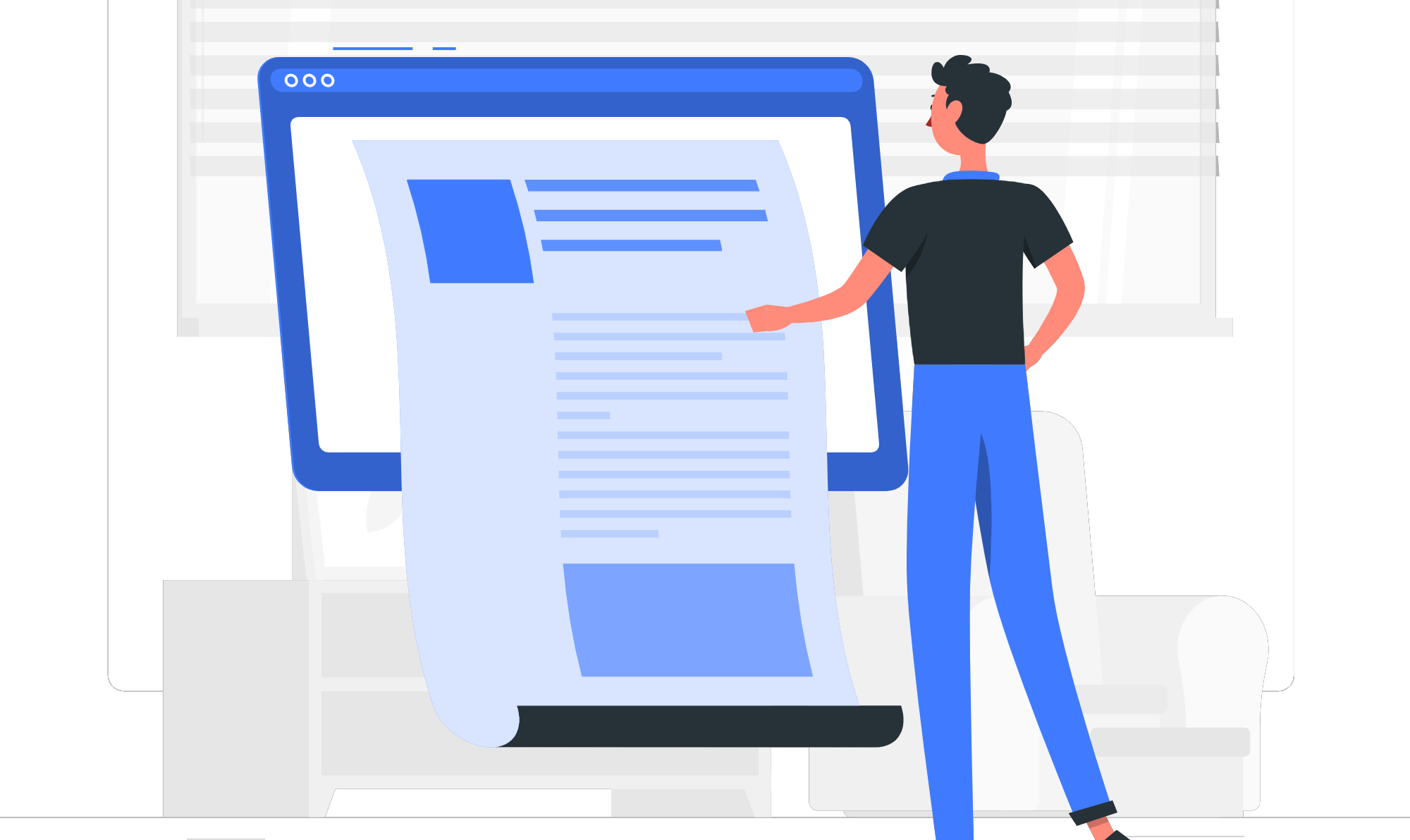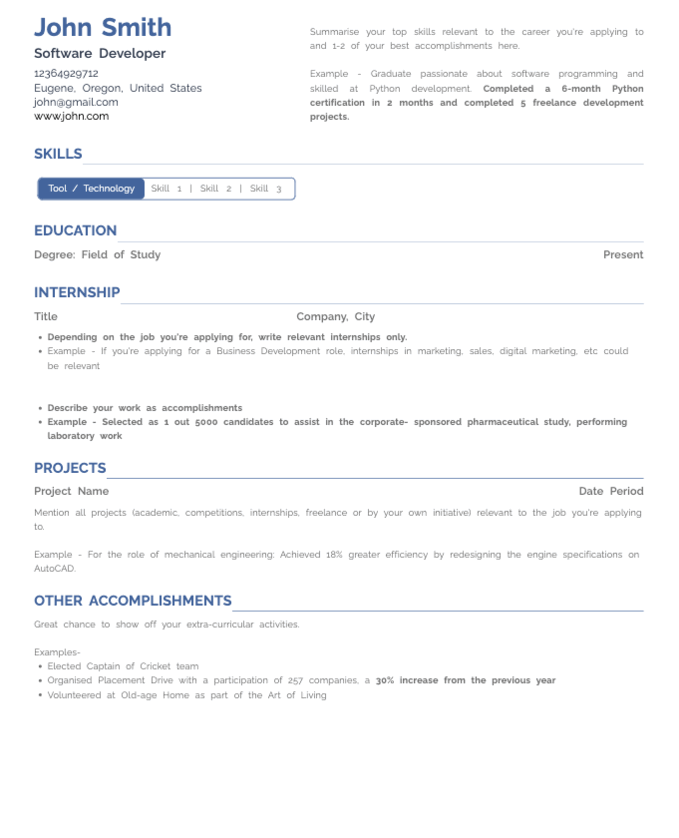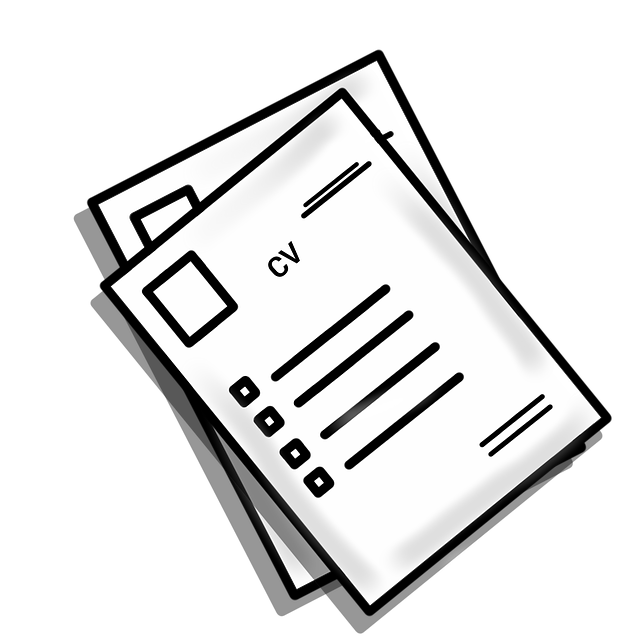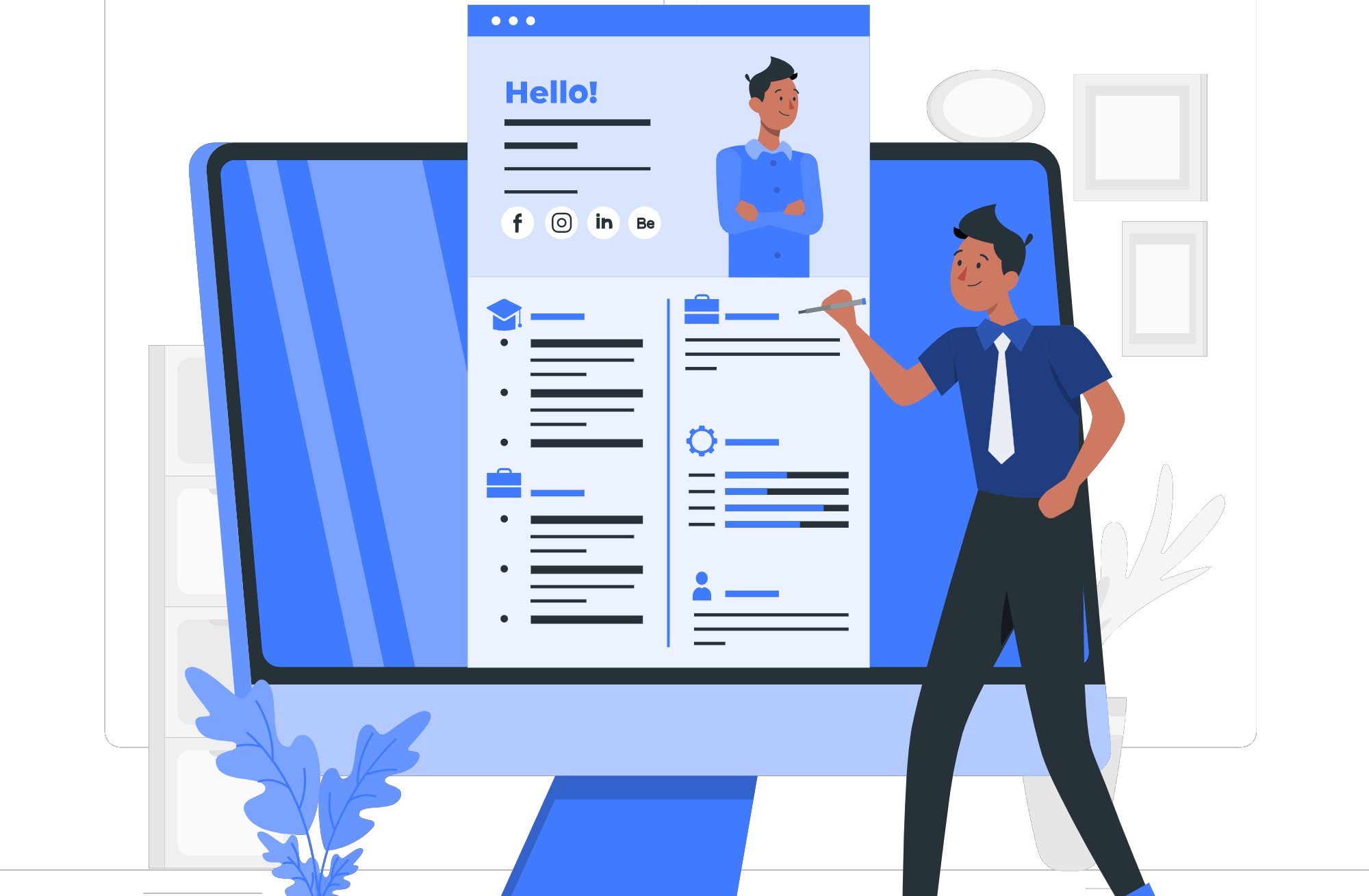10+ Tips to Build a Resume With Description in 2023
4 min read

How to build a resume with description?
Generally, experts suggest writing resumes concisely. However, it is important to elaborate more in some resume sections.
Hence, we are going to clear all your doubts regarding how to build a resume with description professionally to get the most benefit out of it.
Here, you will get answers to the fundamental descriptive resume-building questions, like:
- What is a resume with description?
- How to use a job description to build a resume?
- What should I avoid while writing a resume?
- What are the common descriptive areas of resumes?
- What are the suitable formats for a resume with description?
- Is it fine to use descriptive language in a resume?
- How to build an effective resume with description?
- Is a cover letter important with a descriptive resume?
Resume building usually takes a lot of time, focus, and effort. Hence, if you are running out of time and want a professional resume quickly, use HyreSnap Online Resume Builder.
It is an artificial intelligence-powered resume-building platform that can build resumes in a snap of the fingers.
Let us move on and get some extensive knowledge on resume with description:
A resume with description is a document that outlines an individual's work history, education, skills, and achievements. Additionally, it also includes detailed descriptions and explanations of their experiences and accomplishments.
A resume with description provides potential employers with a comprehensive understanding of the candidate's suitability for a particular job.
Using descriptive language and specific examples, a resume with description can demonstrate how the candidate has applied their skills and expertise to achieve results in previous roles, making them a strong candidate for the position they are applying for.
Using a job description to build a resume can be a highly effective way to tailor your resume to the specific requirements of the position you are applying for. Here are some steps you can follow to use a job description to build a strong resume:
Read the job description carefully: Start by carefully reading the job description and identifying the key skills, qualifications, and responsibilities required for the position.
Match your experience to the job requirements: Review your own work experience, education, and skills to identify areas that match the job requirements.
Use keywords from the job description: Incorporate specific keywords and phrases from the job description into your resume to demonstrate that you possess the necessary skills and experience.
Highlight relevant accomplishments: Use your work experience to demonstrate how you have applied your skills and expertise to achieve relevant results for the job you are applying for. Focus on specific accomplishments that align with the job requirements.
Customise your resume for each job application: Customise your resume for each job application, using the job description as a guide to ensure that your resume addresses the specific requirements of the position.
Using a job description to build your resume can increase your chances of getting noticed by potential employers and improve your chances of securing an interview for the job you want.
There are several common mistakes that job seekers make when crafting their resumes. Here are some of the most important ones to avoid:
Grammatical and spelling errors: Spelling and grammar mistakes can create a negative impression and signal a lack of attention to detail. Be sure to proofread your resume carefully or use a tool like Grammarly to catch any errors.
Generic and vague language: Using generic language and vague phrases can make it difficult for hiring managers to understand your skills and experience. Be specific and use concrete examples to demonstrate your accomplishments and abilities.
Focusing on duties instead of accomplishments: A list of job duties doesn't give employers any insight into what you have accomplished in your previous roles. Use bullet points to highlight specific achievements and projects you have worked on.
Overusing buzzwords and industry jargon: It's important to use industry-specific language. Overusing buzzwords and jargon can make it difficult for non-experts to understand your qualifications. Use plain language wherever possible.
Not tailoring your resume to the job: Each job application is unique, and you must tailor your resume to the specific requirements of the job you are applying for. Take the time to review the job description and adjust your resume accordingly.
Focusing too much on irrelevant information: Employers are primarily interested in your relevant experience and skills, so avoid including too much irrelevant information like hobbies or personal details.
By avoiding these common mistakes, you can create a more effective and professional resume that stands out to potential employers.
The common descriptive areas of a resume include:
Summary/Objective Statement: This section briefly overviews your skills, experience, and career goals. You must tailor it to the specific job you are applying for and highlight your most relevant qualifications.
Work Experience: This section describes your previous employment history, including job titles, companies, dates of employment, and job duties. You should highlight your accomplishments and impact in each role using descriptive language and specific examples.
Education: This section lists your educational background, including degrees, certifications, and relevant coursework. Depending on your level of experience, you may choose to place this section above or below your work experience.
Skills: This section lists your technical and soft skills, including specific programs or tools you are proficient in.
Accomplishments: This section highlights your most significant accomplishments and contributions throughout your career. This can include awards, published works, successful projects, or other notable achievements.
Professional Memberships and Certifications: This section lists any professional memberships or certifications relevant to your career. This can include professional associations, industry-specific certifications, or licences.
By including these descriptive areas in your resume and using specific language and examples to highlight your skills and accomplishments, you can create a powerful marketing tool that effectively communicates your qualifications to potential employers.
There are several suitable formats for a resume with descriptions. Here are some of the most common ones:
Chronological Resume Format
This format lists your work experience in reverse chronological order, with your most recent position listed first. This format is suitable for job seekers with consistent employment histories and those looking to highlight their career progression.
Functional Resume Format
This format focuses on your skills and accomplishments rather than your work history. This format is suitable for job seekers with gaps in their employment history or those looking to transition into a new career.
Combination Resume Format
This format combines chronological and functional formats, highlighting your skills and experience. This format is suitable for job seekers with diverse skills and experience who want to showcase their career progression and accomplishments.
Targeted Resume Format
This format is tailored specifically to the job you are applying for, using the job description as a guide to highlight your most relevant skills and experience. This format is suitable for job seekers who want to make a strong impression and stand out from other applicants.
Visual Resume Format
This format uses design elements like charts, graphs, and images to highlight your skills and experience. This format is suitable for job seekers in creative industries or those with a strong visual design background.
Regardless of your format, ensure your resume is readable and visually appealing. Use clear, concise language and highlight your accomplishments as well as skills in a way relevant to the job you are applying for.
Yes, using descriptive language in your resume can be very effective in helping to convey your skills, accomplishments, and overall value as a job candidate.
However, it's important to strike the right balance between being descriptive and being concise.
You don't want to use too much flowery language or filler words that don't add any real value to your resume. Instead, focus on using descriptive language that is clear, specific, and relevant to the job you're applying for.
Using descriptive language in your resume can help you stand out and make a strong impression on potential employers. Just be sure to use it strategically and in a way that enhances the overall impact of your resume.
Building an effective resume with description can be a daunting task, but following these tips can help you create a compelling and targeted document that highlights your skills and experience:
Tailor your resume to the job: Use the job description to identify the key skills and requirements for the position and tailor your resume to highlight your relevant experience and qualifications.
Start with a strong summary statement: Use a strong summary statement to introduce yourself and highlight your key qualifications and career goals.
Use action verbs and quantifiable achievements: Use strong action verbs and quantifiable achievements to describe your work experience and accomplishments.
Focus on accomplishments, not just job duties: Highlight your accomplishments and contributions rather than just listing your job duties. This helps to demonstrate your impact in each role and shows that you are a results-oriented employee.
Use keywords: Use industry-specific keywords and jargon to show that you are knowledgeable and experienced in your field. This also helps to ensure that your resume is picked up by applicant tracking systems (ATS) when you apply online.
Be concise and organised: Keep your resume concise and well-organized, using bullet points and headings to make it easy to read and navigate.
Proofread and edit carefully: Proofread your resume carefully for spelling and grammar errors, and have someone else review it to ensure it is error-free and professional-looking.
By following these tips, you can create an effective resume with a description that showcases your qualifications and achievements and helps you stand out in a competitive job market.
A cover letter is recommended with a descriptive resume for the same reasons that it is recommended with any other type of resume.
A well-crafted cover letter can help you stand out from other candidates and make a strong impression on potential employers. Here are some specific reasons why a cover letter is recommended with a descriptive resume:
Provides additional context: A descriptive resume provides more detail and context than a traditional resume.
However, a cover letter can still provide additional context about your skills, experience, and career goals. It allows you to explain how your experience relates to the job you are applying for and why you are the best candidate for the position.
Highlights your communication skills: A descriptive resume can be a powerful tool but may not fully showcase your communication skills. A cover letter allows you to demonstrate your ability to write clearly and persuasively, which is a valuable skill in many professions.
Demonstrates your interest in the position: A cover letter allows you to explain why you are interested in the position and how it aligns with your career goals.
This demonstrates your enthusiasm and commitment to the job, which can be a deciding factor for many employers.
Shows your attention to detail: A well-crafted cover letter shows that you have taken the time to research the company and the position. This demonstrates your professionalism and attention to detail, which are important qualities in any job.
Overall, a cover letter is a valuable tool for job seekers to showcase their skills, experience, and enthusiasm for the job.
It allows you to connect with the employer and show why you are the best candidate for the job, even if you have a descriptive resume.
You can use online available resume formats to build a professional resume with description. Post that, you will have to add all the essential sections and mention your resume details effectively.
However, you can skip this process by using HyreSnap Online Resume Builder. It is powered with artificial intelligence and can help you craft eye-catchy resumes within some minutes.
We have showcased every essential point to build a resume with description in 2023. However, you can check out the below-given key takeaways to revise everything in short:
For additional career assistance, feel free to reach us at contact@hyresnap.com. Our experts will help you frame a sparkling career.

Try Now for Free!




